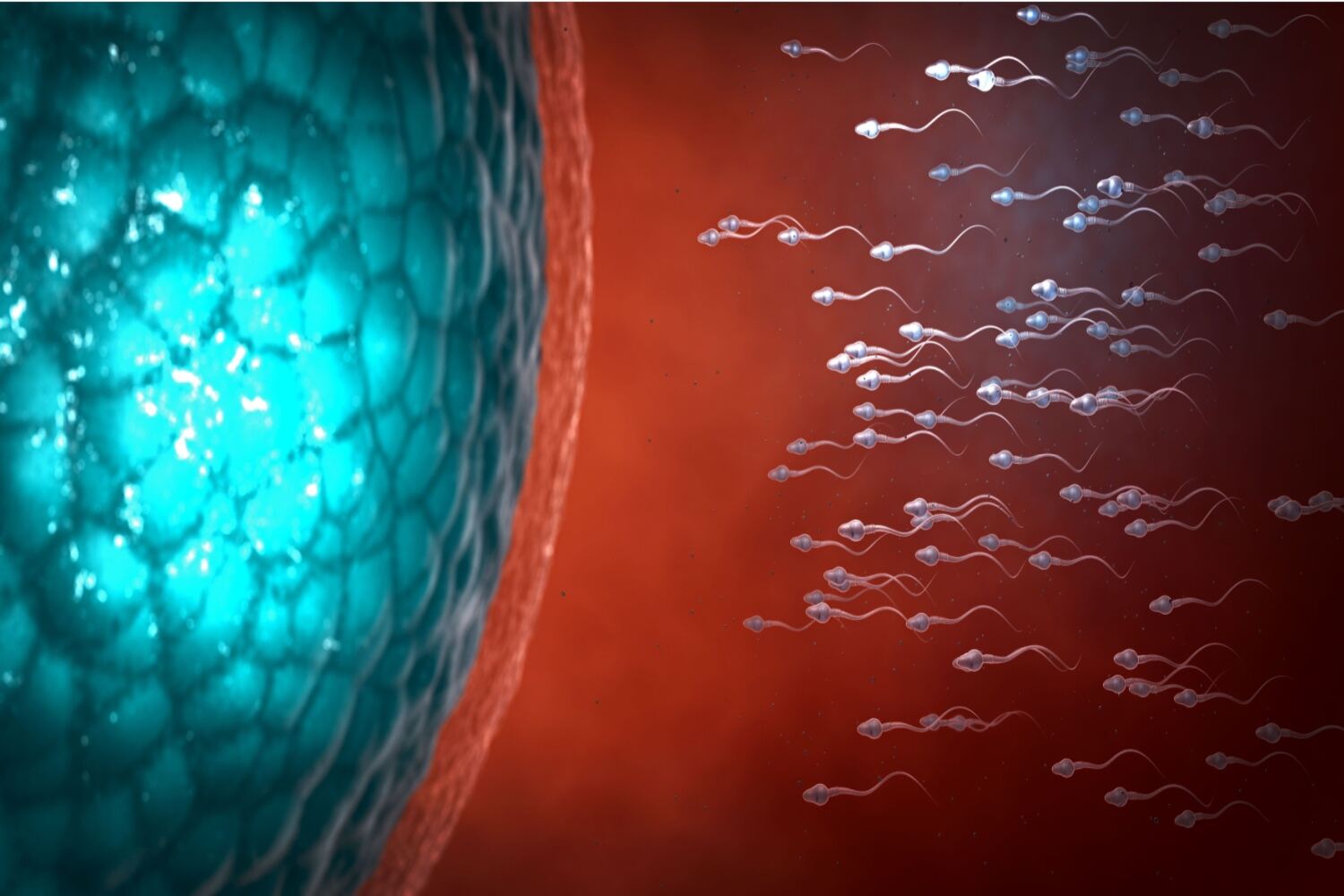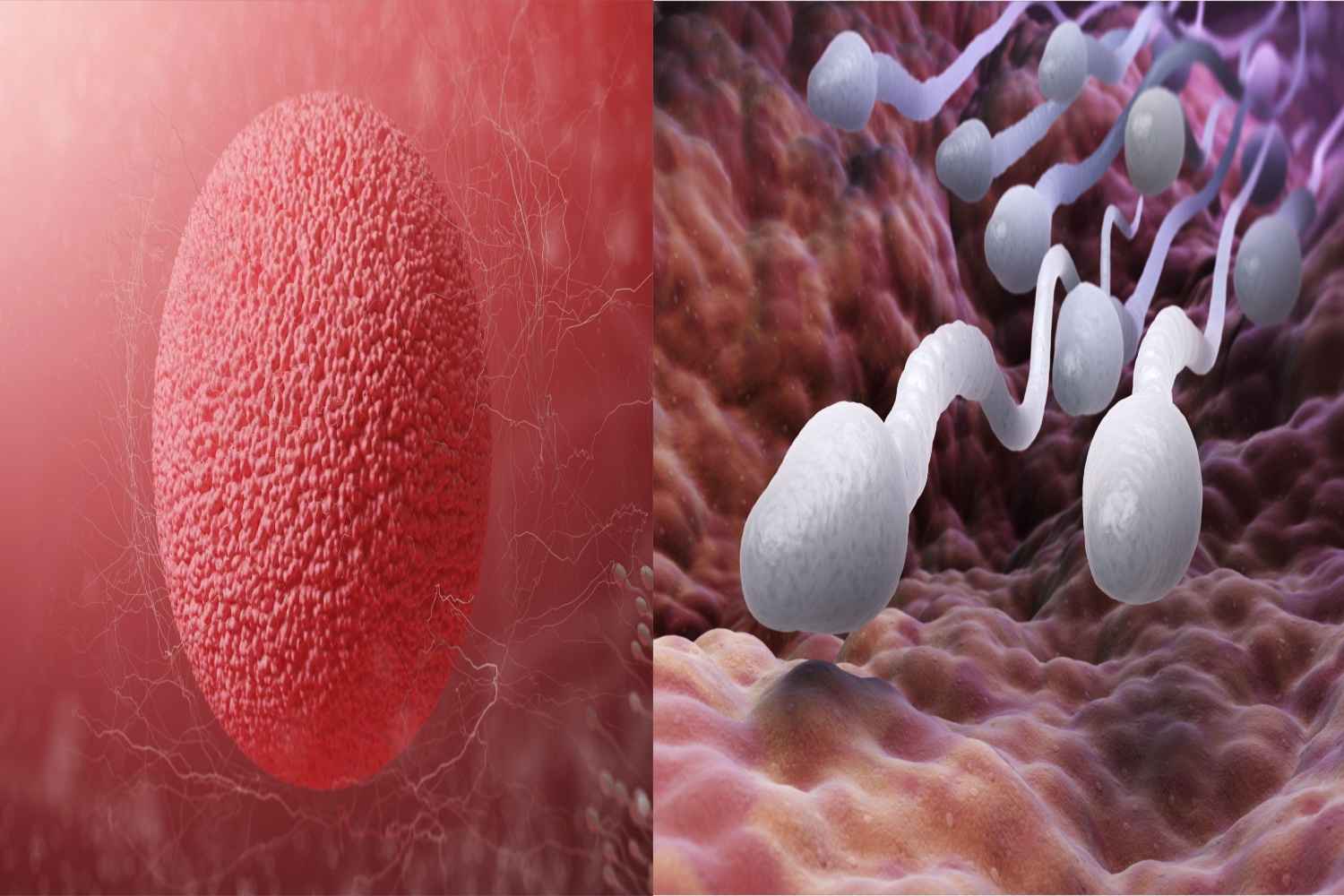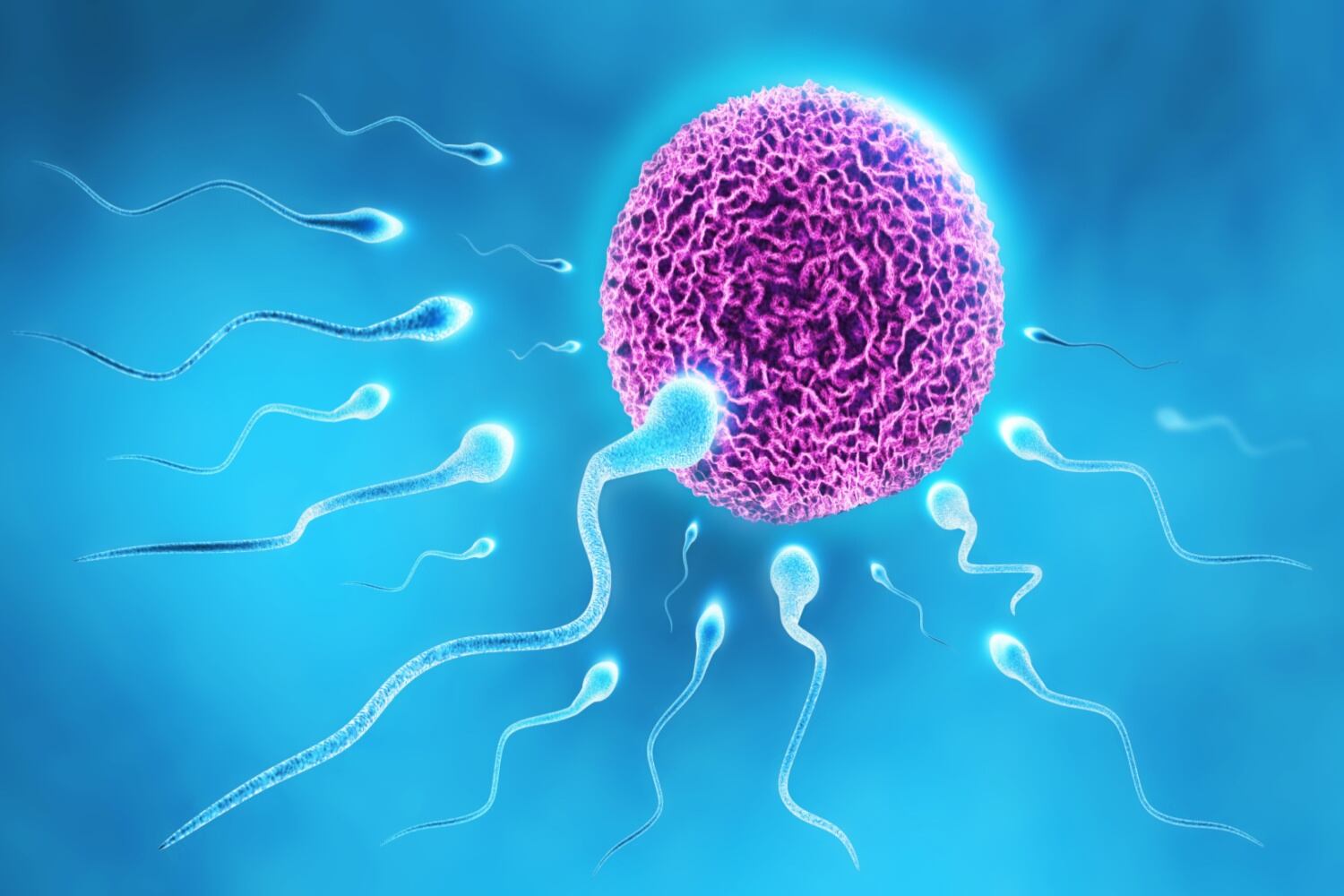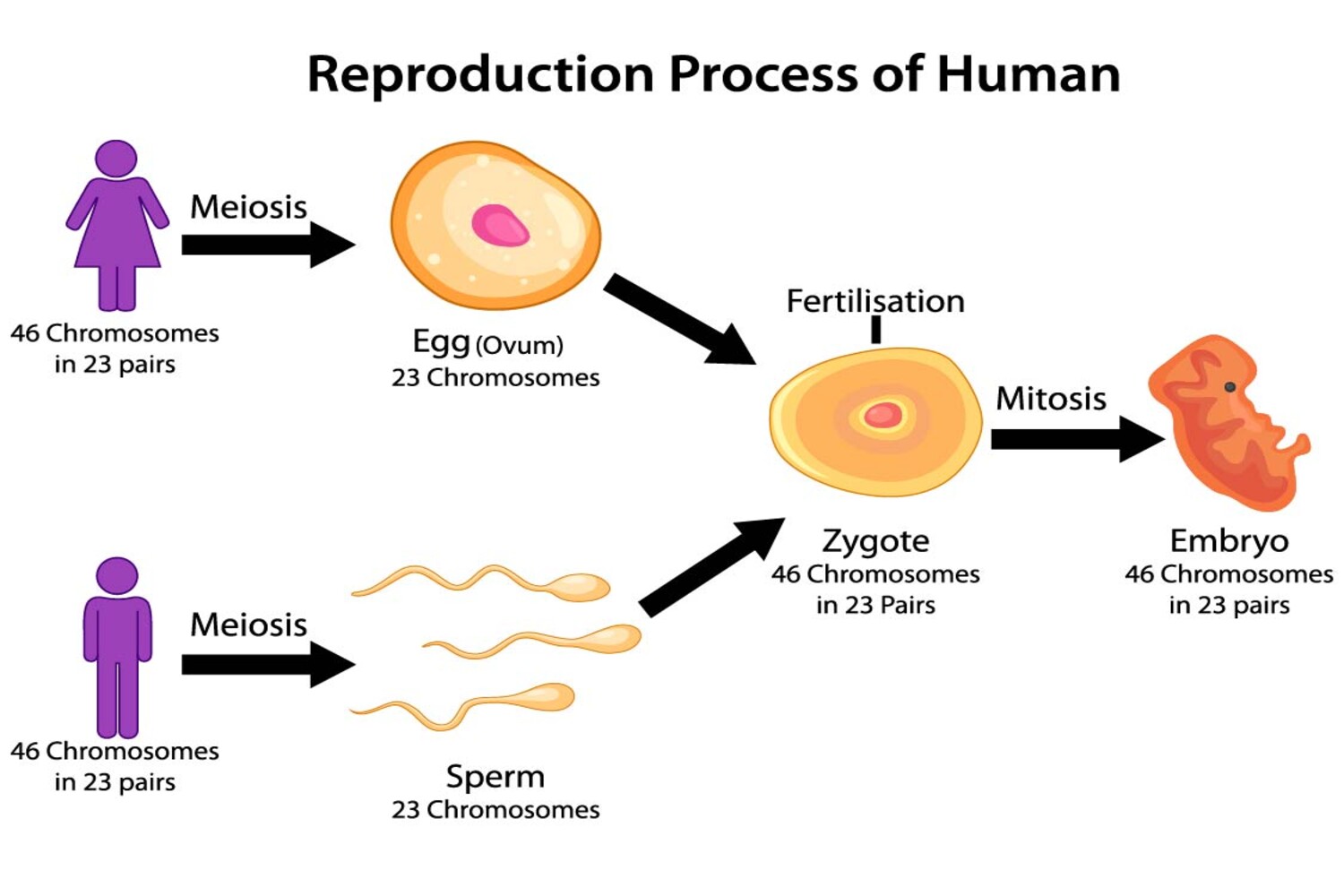
The human reproductive system is a work of nature’s miracle. The complex process of conception is simply a matter of chance with a tiny window where the sperm and ovum can meet, fertilize and grow into an embryo which later takes the form of a tiny baby.
So what exactly are these sperm and ovum? What are their characteristics and functions and how do they differ from each other? How do they play roles in the process of fertilization? Here is everything you need to know
In This Article
- Primary Function of Sperm And Ovum in Human Reproduction
- How do The Size And Structure of Sperm And Ovum Differ?
- Lifespan of Sperm And Ovum
- Primary Mode of Movement For Sperm And Ovum
- How do Chromosomes Contribute to The Differences Between Sperm And Ovum?
- Where Does Fertilization Occur And What Follows After?
- FAQ’s
Primary Function of Sperm And Ovum in Human Reproduction
The sperm and ovum both are vital components for reproduction. Here is a detailed look at the functions of the sperm and ovum.
Sperm
The primary function of sperm in human reproduction is to deliver genetic material to the egg during fertilization. Sperm are highly specialized, mobile cells designed for swimming through the female reproductive tract to reach the egg (1). Once a sperm successfully penetrates the egg, it forms a zygote, marking the beginning of a new individual.
Ovum
The primary function of the ovum, or egg, is to serve as the recipient of sperm during fertilization. The egg carries genetic material and provides essential nutrients for the early stages of embryonic development (1A). When fertilization occurs, the egg and sperm combine, forming a single-cell zygote with a unique set of genetic instructions (2). The zygote then undergoes cell division and differentiation, eventually developing into a multicellular embryo.
How do The Size And Structure of Sperm And Ovum Differ?

While sperm and ovum are different in terms of their source and function, they differ in their size and structure too. Here is a detailed look at the both of them.
Sperm
The Sperm cells are small, microscopically sized cells. Sperm are characterized by a streamlined structure with a head, midpiece, and tail (flagellum). The head contains genetic material (chromosomes), the midpiece houses cellular energy (mitochondria), and the tail facilitates motility, allowing sperm to swim towards the egg (1B).
Ovum
The ovum, or egg, is comparatively larger than sperm and is visible to the naked eye. The ovum is a spherical cell with a distinct nucleus containing genetic material. It is surrounded by a protective outer layer called the zona pellucida (3). Unlike sperm, the ovum is non-motile, relying on cilia and muscular contractions in the fallopian tubes for transportatioLifespan on
Lifespan of Sperm And Ovum
In the intricate dance of human reproduction, the lifespan of sperm and ovum plays a pivotal role. Sperms, those remarkably agile microscopic entities, embark on a journey of survival within the female reproductive tract post-ejaculation. Endowed with a relatively short lifespan, these resilient cells can persist for up to five days, awaiting the opportune moment for fertilization.
Meanwhile, the ovum, a considerably larger and non-motile cell, follows a contrasting timeline. Released during ovulation, the ovum’s existence is brief but critical. With a lifespan spanning approximately 12-24 hours, the egg patiently awaits the arrival of a sperm for fertilization. This temporal intricacy emphasizes the importance of synchronicity between the release of the egg and the presence of viable sperm, highlighting the delicately timed choreography that underlies the creation of new life.
Sperm Lifespan
Sperm have a relatively short lifespan. After ejaculation, sperm can survive in the female reproductive tract for up to five days. During this time, they may undergo capacitation, a process that enhances their ability to fertilize an egg.
Ovum Lifespan
The ovum, or egg, has a comparatively short lifespan. After ovulation, an egg is viable for about 12-24 hours. The egg decomposes if fertilization does not take place within this window. This short window emphasizes the importance of timing for successful fertilization during the menstrual cycle
Primary Mode of Movement For Sperm And Ovum

While the sperm and ovum have the same end goal of fertilization and procreation, their modes of movement differ.
a. Sperm
The primary mode of movement for sperm is active swimming. Sperm cells are equipped with a long, whip-like tail known as a flagellum, which propels them forward. This tail enables sperm to navigate through the female reproductive tract, overcoming various barriers and increasing the likelihood of reaching the egg for fertilization.
b. Ovum
The ovum, in contrast, does not exhibit active movement. Ova are non-motile cells and rely on other mechanisms for transportation. Once released from the ovary during ovulation, the ovum is propelled through the fallopian tubes by cilia—hair-like structures—and muscular contractions of the reproductive organs. This passive movement assists the ovum in its journey toward potential fertilization by a sperm cell.
How do Chromosomes Contribute to The Differences Between Sperm And Ovum?
Chromosomes play a fundamental role in determining the genetic makeup of an individual, and they contribute to the distinct characteristics of sperm and ovum
Sperm
The sperm cells have x or y chromosomes (4). The presence of a Y chromosome leads to the development of a male offspring, while an X chromosome results in a female. This genetic contribution from the sperm determines the sex of the future embryo (5).
Ovum
Ova, or egg cells, always carry an X chromosome (5A). When fertilization occurs, combining the X chromosome from the ovum with either an X or Y chromosome from the sperm determines the genetic sex of the developing fetus. The ovum provides a stable contribution in terms of its chromosomal makeup, while the sperm introduces the variable that decides the sex of the offspring.
Where Does Fertilization Occur And What Follows After?

Fertilization, the miraculous union of sperm and ovum (6), typically occurs in the fallopian tubes, a narrow passage connecting the ovaries to the uterus. This strategically located site serves as the meeting point for the mobile sperm, which have navigated the female reproductive tract, and the non-motile ovum, released during ovulation.
Once fertilization transpires, forming a single-cell zygote with a unique combination of genetic material, the zygote embarks on a transformative journey (6A). The zygote undergoes rapid cell divisions, creating a cluster of cells known as a blastocyst. This growing entity moves through the fallopian tubes towards the uterus, all the while differentiating into specialized cell types.
Upon reaching the uterus, the blastocyst seeks a suitable spot for implantation into the uterine lining (7). This marks the initiation of pregnancy, and the implanted blastocyst begins to develop into an embryo and later a fetus. The intricate process following fertilization, from the union of sperm and ovum to the establishment of a growing life within the uterus, underscores the marvels of human reproduction.
The sperm and ovum have their own intricate structure, functionality and make. Both are equally important for the process of fertilization. Defect or dysfunction of either of these can cause conception and reproduction to fail leading to infertility.
FAQ’s
1. What is The Main Difference Between The Sperm And The Ovum?
The sperm acts as a carrier of genetic material while the egg acts as the recipient of the genetic material. During the fertilization process, the sperm delivers this genetic material to the egg which results in the formation of zygote and kick-starts the process of conception and pregnancy.
2. What Chromosomes do The Sperm And Ovum Carry?
The sperm carries the X and Y chromosomes and stands as the deciding factor for the gender of the baby or offspring. X chromosome results in a male offspring while Y chromosome results in a female offspring. The ovum or egg cell carries only the X chromosome. The chromosome from the sperm combines with the X chromosome from the egg which finally determines the gender of the to-be born baby.
References
- Sperm – Molecular Biology of the Cell – NCBI Bookshelf – [https://www.ncbi.nlm.nih.gov/books/NBK26914/]
- Embryology, Fertilization – StatPearls – NCBI Bookshelf – [https://www.ncbi.nlm.nih.gov/books/NBK542186/]
- Ultrastructure of the human egg – PubMed – [https://pubmed.ncbi.nlm.nih.gov/9234062/]
- Size differences between human X and Y spermatozoa and prefertilization diagnosis – PubMed – [https://pubmed.ncbi.nlm.nih.gov/9239709/]
- Chromosomal Sex Determination in Mammals – Developmental Biology – NCBI Bookshelf – [https://www.ncbi.nlm.nih.gov/books/NBK9967/]
- The molecular basis of fertilization (Review) – PMC – [The molecular basis of fertilization (Review) – PMC (nih.gov)https://www.ncbi.nlm.nih.gov/pmc/articles/PMC5029953/]
- A Review of Mechanisms of Implantation – PMC – [https://www.ncbi.nlm.nih.gov/pmc/articles/PMC5769129/]

